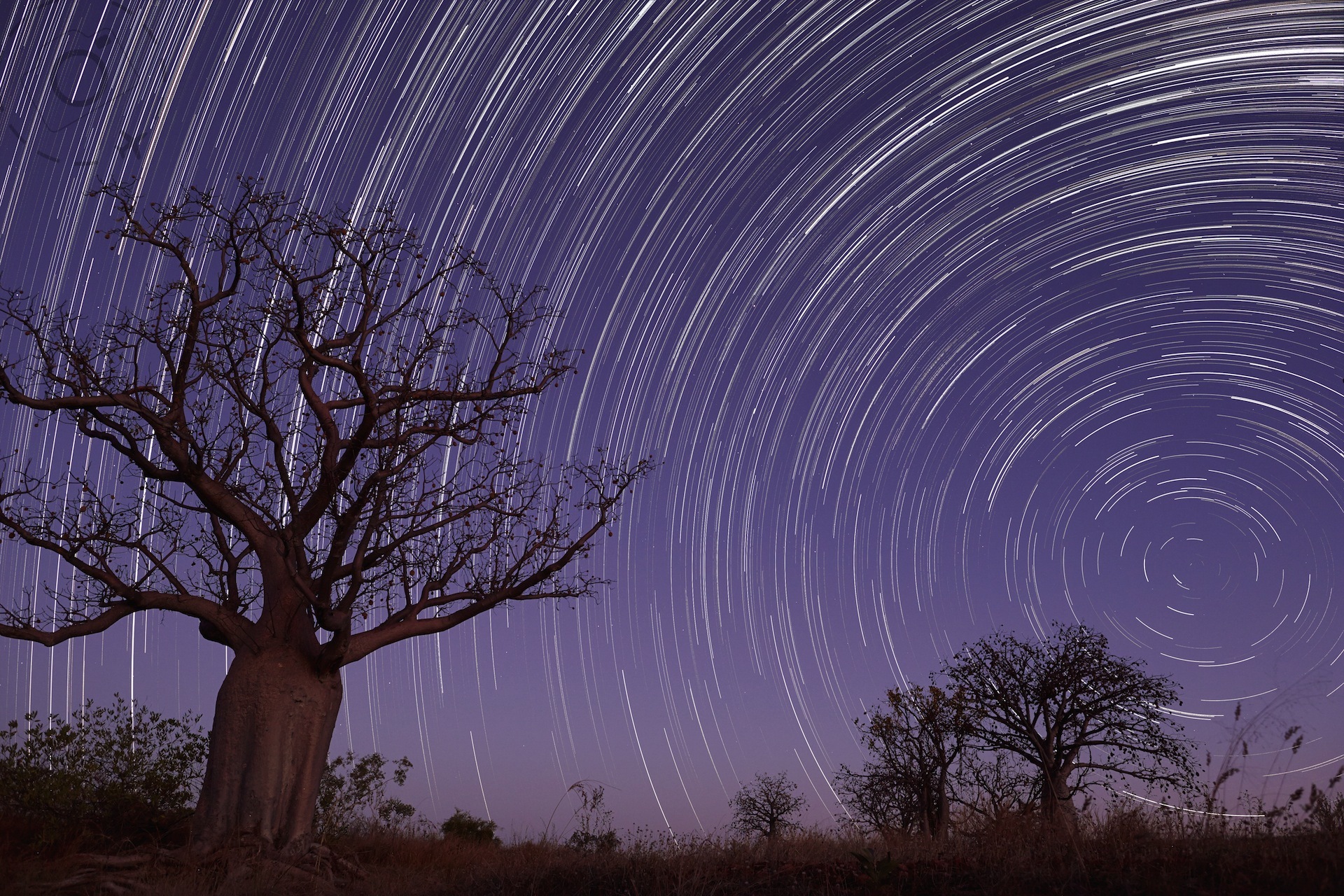Every year I get a chance to shoot stars in the Kimberley region of Australia, where the skies are clear and the Boab trees provide beautiful silhouettes. Each year I get to rethink and fine tune the process of shooting star trails, and how to process them.
My new favourite method involves shooting two kinds of images and bringing them together for the best effect. The regular series of short and dim frames that I use to compile the actual trail is the first part, but in addition I grab a single "bright frame" that acts as the backdrop to the trail.
This bright frame is essentially what I usually refer to as a "galaxy map", a high ISO and low f-stop capture that reveals the intensity of the Milky Way. It's pretty easy to silhouette a beautiful Boab with the bright frame, and they're handy for locking down your final composition before rolling the trail frames.
By adding the bright frame to the stacked set of trail captures you get a more subtle background to emphasise the silhouetted subject plus you smooth out the trails as well. By smooth I refer to the jaggy curves or the gaps between frames.
I now also use 30 seconds instead of 3 minutes for each trail frame, and drop the ISO a little in accordance with the minimal number of stars I want in my final compound image.
Working with 30 second trail frames instead of the 3 minute version makes for demanding work at the other end when you have to process the images and stack them. It's certainly easier to build a 2 hour star trail with 40 times 3 minute frames than 240 times 30 second frames. You just need a little more patience and the rewards are a very smooth image.
Also worth noting is the requirement to remove all sharpening when processing from RAW to JPG. This only adds to the harshness of the curves and the trails simply look better when they are softer.
For my new technique the essence comes down to "less is more" and that includes the trails themselves. Instead of filling the frame with intense crowds of stars, and hence illuminating the impression of a silhouette, the trails are a fine and delicate layer that sits above the "Bright Frame". By adjusting your processing of the RAW trail frames, to reduce the exposure if required, you can limit the number of stars that make an appearance and reduce their strength of footprint across the sky.
Soft is good, soft is subtle.
In the middle of a remote location near Home Valley Station we sipped champagne and waited for the sun to fade away. In the daylight we chose our favourite trees and under the star light we released the shutters to capture the night sky.
We worked out where the Southern Cross had risen and had a good idea where the southern celestial pole would appear in our compositions. For two hours we recorded the stars spinning around our heads, returning home with lots of images and a flat battery. The first run through is done at low resolution, a quick test to see if some fine tuning is required before running a the more demanding hires version.
Invariably we find that the trail is too crowded, too bright and too busy. You just cant see it on a single frame, it looks empty and blank. So you run more tests, tweak the treatment to drop out a few more stars and stack them together once more.
Finally the compound image comes together smoothly, convincingly. I shot a few versions of the "Bright Frame" on this occasion, at the end and the beginning of the trail. The Milky Way runs diagonally across the frame in one version, and rests along the top of the frame in another. One more variant was shot early in the evening when only a few stars had popped into view and the foreground is illuminated just enough to give the appearance of a moonlit scene.
All of these are good candidates for combining with the fine tuned trail, combining a bright view of the sky with the spinning stars that dance above.

Click below for the full feature on how to do star trails and galaxy maps, "When the stars come out"...
ewenbell.com/blog/When_The_Stars_Come_Out

Keep Reading
Join Ewen's newsletter for monthly updates on new photography articles and tour offers...Subscribe Here









